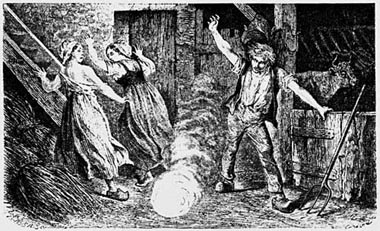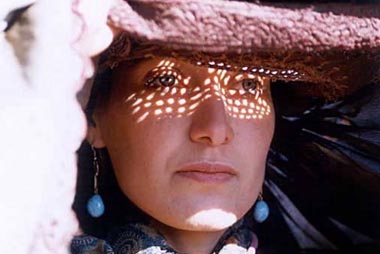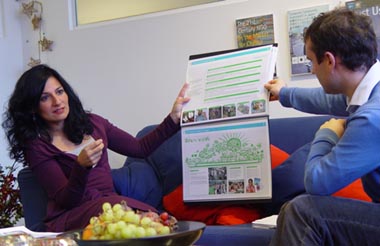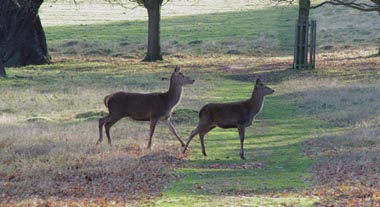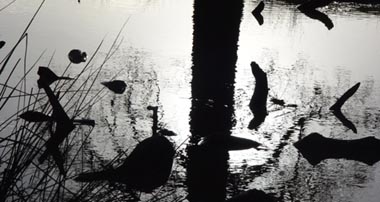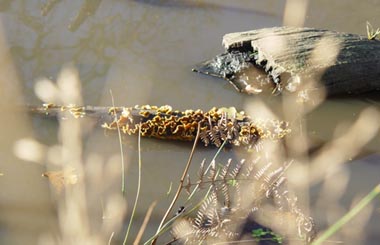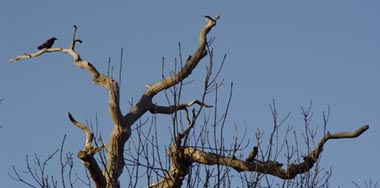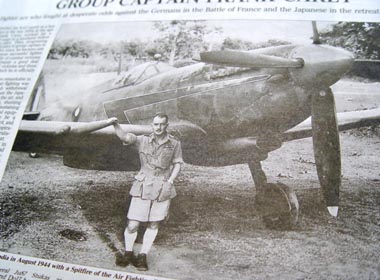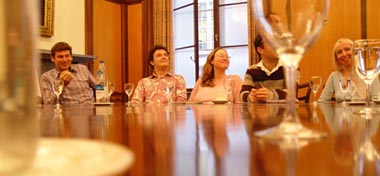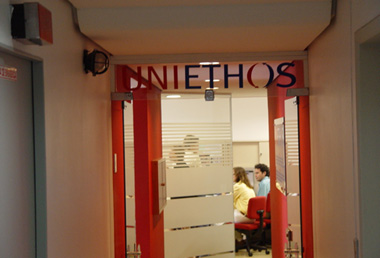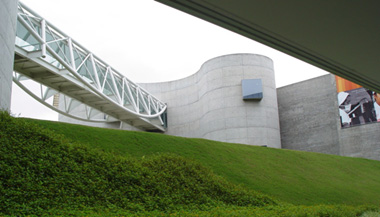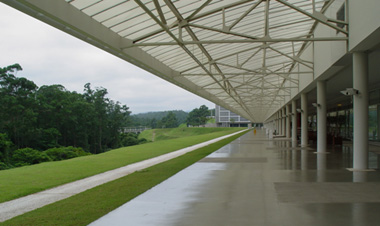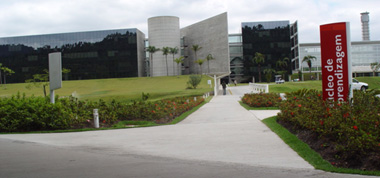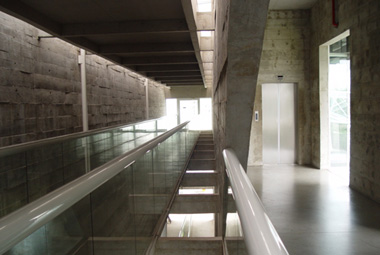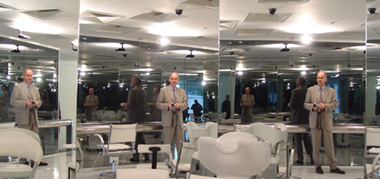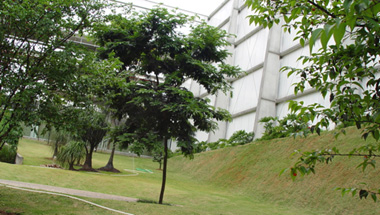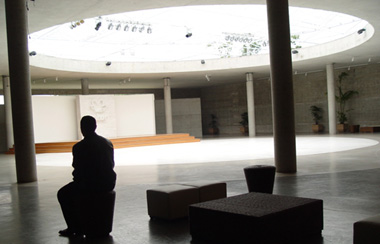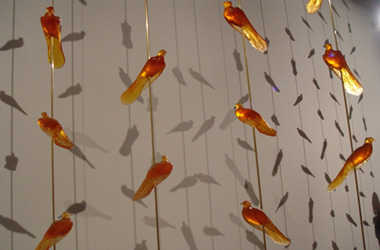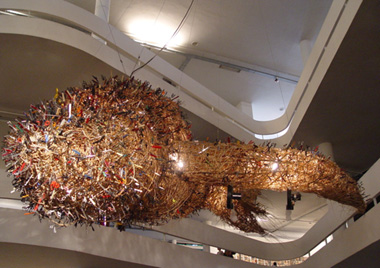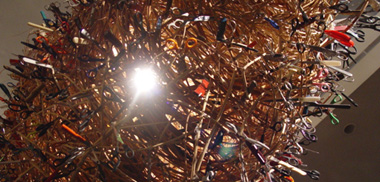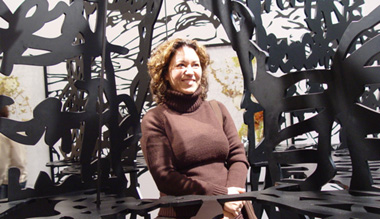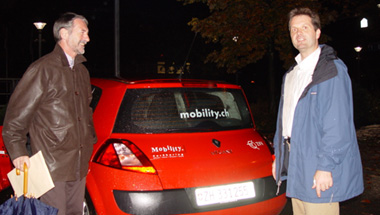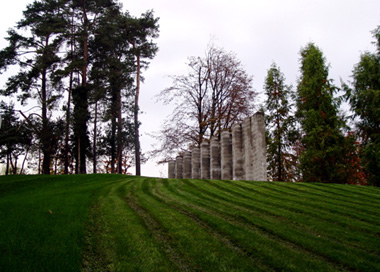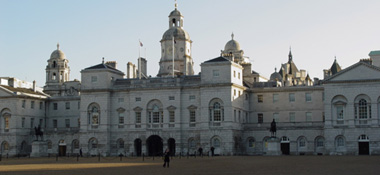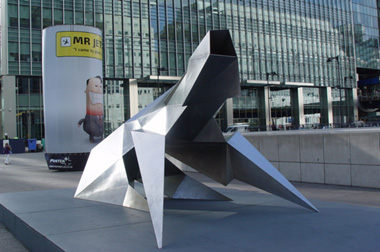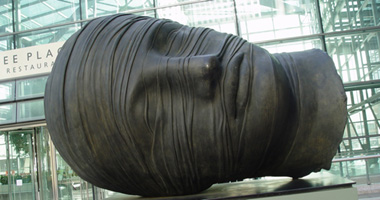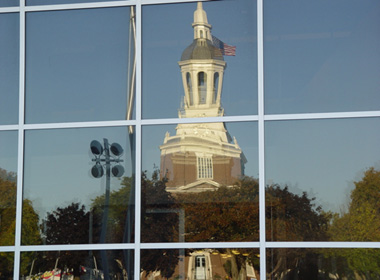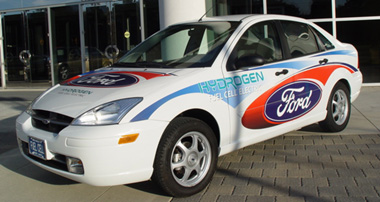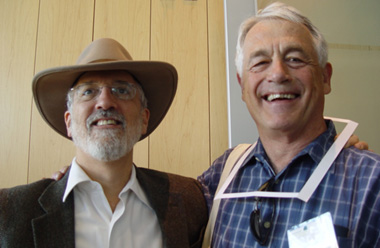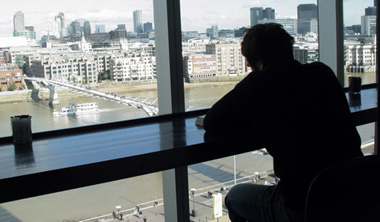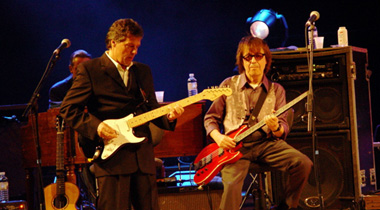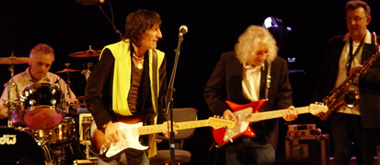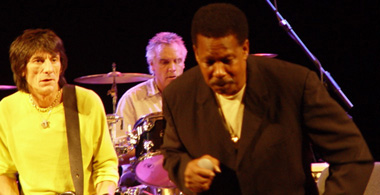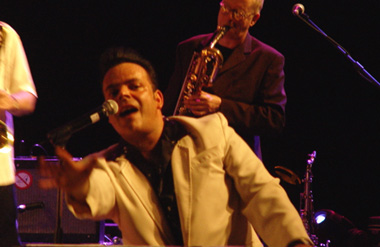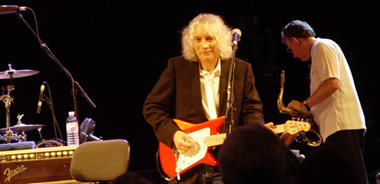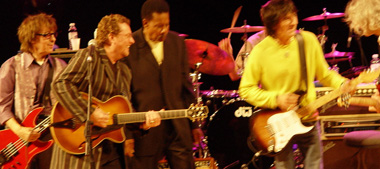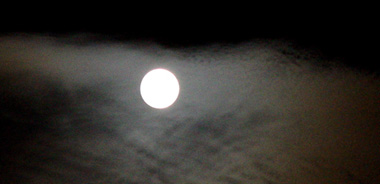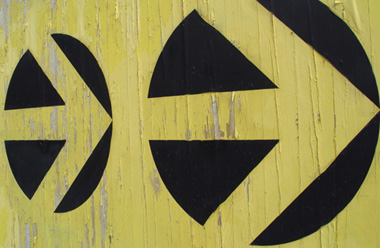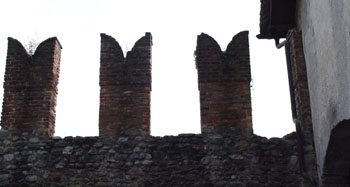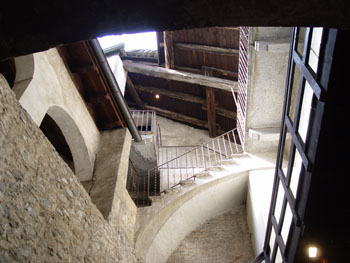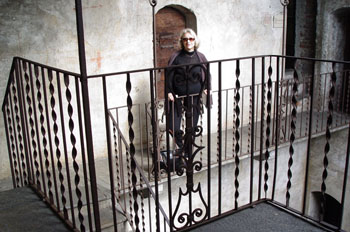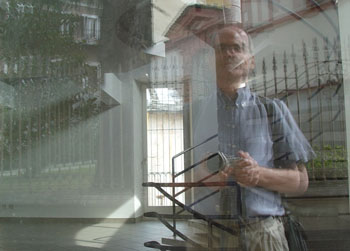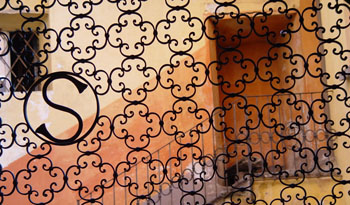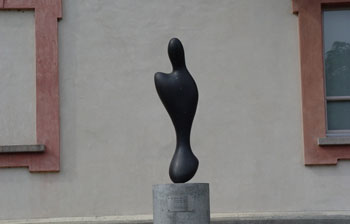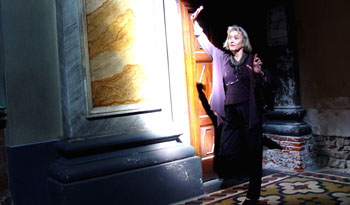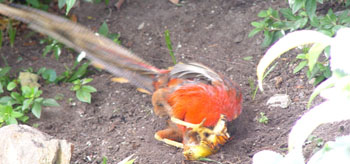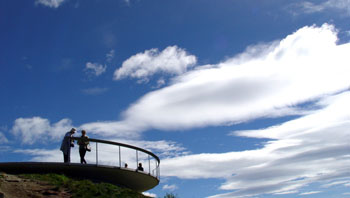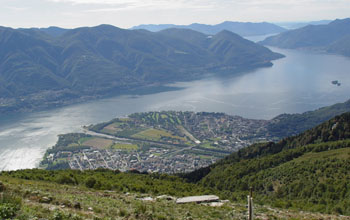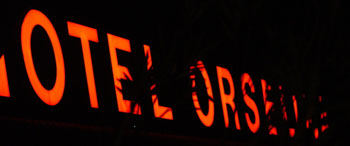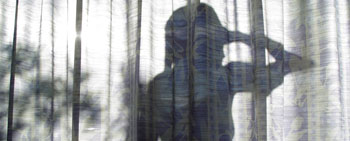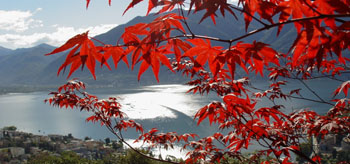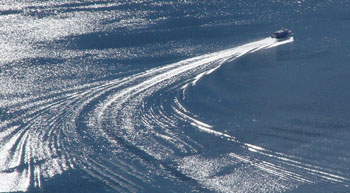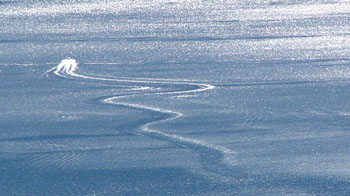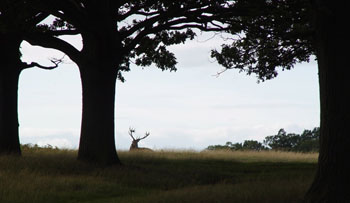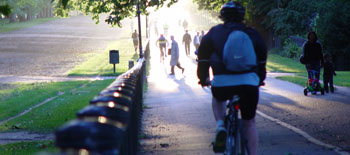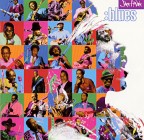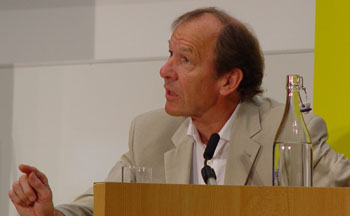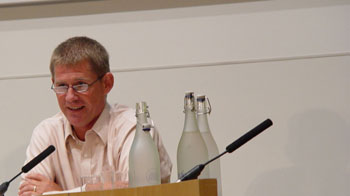Sunday, January 30, 2005
DAVOS 05
Even before I arrived in Davos for the thirty-fifth World Economic Forum summit there was a sense that this year’s agenda would be different. “There is a strong feeling that everything on the surface looks pretty good, but something somewhere is not behaving itself underneath,” HSBC chief economist Stephen King had told the Financial Times. This, apparently, was to be his first summit and I have no idea what he made of it all, but it was my fourth and, like many I spoke to, I was stunned by the seismic shifts in the agenda.
No doubt HSBC had in mind issues like the sagging dollar and soaring deficits, and such issues certainly sent powerful tremors through the summit, as did the rise of China as an economic power. But an early warning of the wider tectonic processes at work came during a ‘Global Town Hall’ meeting, where some 700 leaders were asked to select six priority ‘tough issues’ (www.weforum.org). Many CEOs and company directors who had followed well-worn trails to Davos may have expected well worn issues to resurface, with perhaps something topical on how corporations can best respond to natural disasters. But what they got was almost as unexpected as the tidal waves on 26 December.
When the votes were counted, the top issues were: poverty (64%), equitable globalization (55%), climate change (51%), education and the Middle East (both scoring 44%) and global governance (43%). WEF founder Professor Klaus Schwab later stressed that social and environmental issues have been part of the Davos Forum’s agenda for decades, which is true, but the difference is that they are no longer confined to workshops in distant hotel basements. They are centre stage.
As President Chirac was followed by Prime Minister Blair and Blair by Chancellor Schroder, hope grew that a deeper set of political responses might now be emerging. It is clear that such leaders now recognize the need to address systemic issues of poverty, governance and climate change. The anti-globalization protestors may have been less in evidence, but their issues were ubiquitous, in the speeches of political, business and civil society luminaries. In an exit video ‘vox pop’ poll, indelicately, I even found myself saying that it had often seemed as if ‘the lunatics have taken over the asylum’.
Still, many still worry that it will be the usual problem of too little, too late. Sixty years after the liberation of Auschwitz-Birkenau, Polish President Aleksander Kwasniewski wondered aloud how such horrors could have been allowed to happen. Some of us silently wondered whether by 2065 the world won’t be asking how a new set of horrors happened?
Al Gore, for example, shocked the final plenary with his dramatic wake-up call on climate change. And UK trade and industry secretary Patricia Hewitt recalled that the heat wave of 2003 led to 26,000 premature deaths in Europe and costs of around £13.5 billion.
But it remains to be seen what long-standing WEF supporters make of all this. Some may be taking comfort in a recent polemic in The Economist arguing that the corporate social responsibility agenda has gone too far, but a striking number of business people publicly and specifically refuted that line of thinking during the summit — indeed, even some Economist journalists present privately expressed dismay.
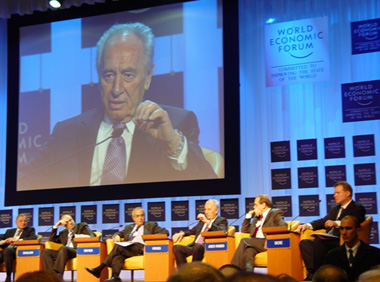
Shimon Peres on Middle East (©JE)
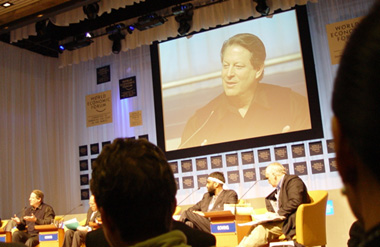
Al Gore on climate change (©JE)
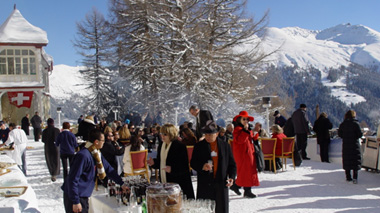
Final lunch (©JE)

Alpine cooking (©JE)
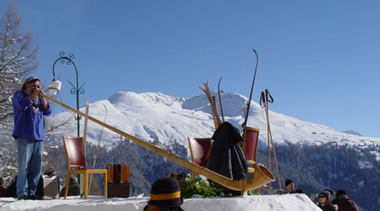
Alpine music (©JE)
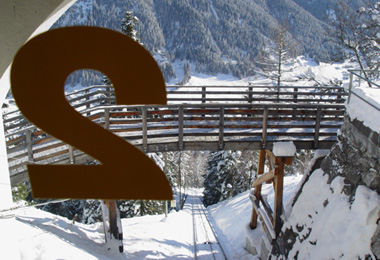
Coming down (©JE)
Monday, January 24, 2005
BLOOD AND GORE
Spent much of the day sketching out the program for our conference tour of Australia and New Zealand in May, plus heard that in addition the trip will now take in not only South Korea and Japan but also China.
In the evening, went across to Buck’s Club, Clifford Street, for a meeting of the 21st Century Trust (www.21stCenturyTrust.org). The Environment Foundation, which I chair (www.environmentfoundation.net), has decided to come in alongside the Trust to organise an annual series of consultations. The Foundation has been slowed down in recent years by a number of factors, but particularly by a multi-year legal battle we had to fight with the Charity Commissioners to establish sustainable developent as a legitimate charitable objective. We won, with the result that SD is now formally a charitable objective, but the distraction cost us dear.
Chris Patton, who chairs the Trust, spoke and described the convergence as akin to the Field of the Cloth of Gold, which struck me as a little OTT. I then Googled it when I got home (http://www.britainexpress.com/History/tudor/cloth-gold.htm), which left me slightly worried – since the 1520 event stretched the finances of the English and French treasuries to the limit – and didn’t move things forward politically very much, either. But the imagery worked well and the sentiment was appreciated!
On the way along Clifford Street to the meeting, I was hailed by a couple of friends from Generation Investment Management (http://www.generationim.com), who introduced me to Al Gore (Generation’s Chairman) and David Blood (its CEO). Blood used to head the asset management side of Goldman Sachs. Interesting, since I have just finished an interview of Gore for SustainAbility’s newsletter, Radar, which I did by e-mail.
And way overhead all these meetings, what looked like a full moon sailed serenly across the London sky.
Sunday, January 23, 2005
SEEING THE RUSHES
Gloriously sunny day, so we take a long walk in Richmond Park. The papers are beginning to play with the Davos agenda, which I’ll have to get my brain around next week. Apparently, the World Economic Forum (www.weforum.org) will be running some sort of voting scheme again to see what people think are the Big Issues, which will help as input to the new book. Apart from coverage of the film and pop celebrities who will be there, the main themes to date seem to be: something has gone wrong in the world and we don’t know what it is or how to fix it; the US is key (partly because they seem to be pushing their stick into all sorts of hornets’ nests without any very good idea of what to do next), but Bush and his new US Cabinet won’t be attending; and the Chinese will there, but they – like the Japanese before them – will be listening rather than saying very much.
Oh, and I know not to shoot into direct sunlight, but I have always been intrigued by the kaleidoscopic effects that result.
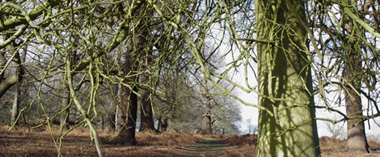
Shadows (©JE)

Dogs (©JE)

Rushes (©JE)
Friday, January 21, 2005
CAN – COMMUNITY ACTION NETWORK
By train to Waterloo, admiring in passing the chimneys on the old Barnes station building, for fascinating morning with three CAN people: James Alexander (Managing Director), Jeremy Raphaely (Director of Social Enterprise Development) and Owen Jarvis (Director of Social Franchising). They support social entrepreneurs in the UK. Just upstream of HMS Belfast, we met in the Mezzanine area of the 1 London Bridge complex, where CAN estimate they save the cluster of NGOs and charities they house some £230,000 a year. Had heard of CAN over the years, without ever quite being able to pull the jigsaw puzzle together. Now it’s much clearer (www.can-online.org.uk) – and I’m impressed. Particularly liked the sound of their ‘Beanstalk’ programme, designed to help social entrepreneurs grow and replicate through franchising.
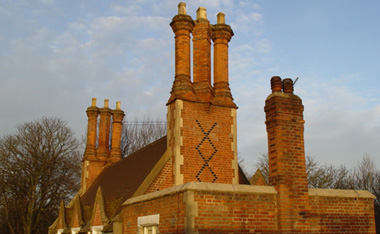
Barnes station (©JE)

HMS Belfast (©JE)
Thursday, January 20, 2005
COLLAPSE AT ROYAL SOCIETY

Out into the darkness after Diamond’s brilliance (©JE)
Elaine, Kavita (Prakash-Mani), Tell (Muenzing) and I make our way across to the Royal Society to hear Jared Diamond speaking about his new book, Collapse – which explores the question why societies collapse. One thing that sticks in my mind is the insult hurled by Easter Islanders at each other as their society spiralled down into the dark night of war and cannibalism: “The flesh of your mother sticks between my teeth.” Reminds me of the book I was reading today on my way to Happy Computers – Rats: A Year With New York’s Most Unwanted Inhabitants, by Robert Sullivan. Rats are a mirror species to our own. When squeezed, they too resort to cannibalism. But Diamond describes himself as a “cautious optimist.”
I had recommended Collapse as required reading to people taking part in a scenarios project a few weeks back, sight unseen, simply on the basis of reviews I had read – and my appreciation of Diamond’s earlier books, The Third Chimpanzee and Guns, Germs and Steel, both excellent. This evening confirmed the prejudices that had led me to do so.
Interested in kowning more? Try http://149.142.237.180/faculty/diamond.htm
HAPPY
Since SustainAbility has been having hiccups with its IT as we switched to new servers in recent days, I worked at home on my Mac before leaving for my meeting with Henry Stewart of IT training company Happy Computers (www.happy.co.uk). Getting off the District Line Tube at Aldgate East, I walked further east – and completely overshot Adler Street, where the Happy empire is based. As a result, I got to see a part of London which I haven’t seen in years – and which could easily be Bangladesh, with a heady interlacing of faces from other parts of the Muslim world.
Happy founder Henry Stewart had taken me to task on what he thought I had said at a Business in the Community conference last year. We had sorted that out, but agreed to meet. And it was astounding how much we proved to have in common. The Happy group may be around twice SustainAbility’s size, but the values and approaches overlap in many areas. The two organisations were founded around the same time. Like us, they are a social enterprise (though neither organisation describes itself as such), highly democratic, but privately held. And, like us, they publish most of their ‘crown jewels’, their training manuals, rather than protecting them as intellectual property. The idea being that if you give today you will receive tomorrow.
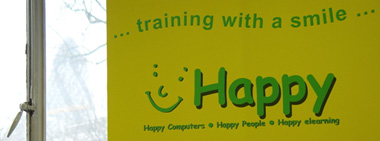
Happy Computers banner, with Erotic Gherkin in background (©JE)
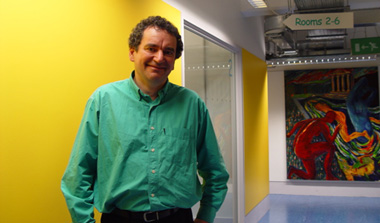
Henry Stewart (©JE)
Wednesday, January 19, 2005
POLITICS
As I walked through Docklands today, with a blustery, cold wind coming up off the Thames, I was thinking that we – both SustainAbility and I – will need to spend more time on the political dimensions of the issues we are trying to tackle. That’s in part because of the current media coverage of the Corner House (www.thecornerhouse.org.uk) legal challenge to the Department of Trade & Industry and, specifically, the alterations made to the ECGD (www.ecgd.gov.uk) rules on bribery and corruption. (And I was headed across to ECGD’s HQ at the time.) But it’s also a sense that as these great issues thrust into the mainstream, as we are now seeing with both climate change in US and EU politics and with human rights concerns (in addition to all the other concerns) in Iraq, the political battles will become increasingly urgent and it may well prove progressively harder to maintain a neutral, objective stance.
Tuesday, January 18, 2005
ZHAO ZIYANG
An extraordinary and very brave man, Zhao Ziyang is probably best remembered for his visit to the protesting students in Tiananmen Square on May 19 1989. “I came too late. I came too late,” he told the doomed students, in distress and close to tears. At the time, he headed China’s Communist Party.
What is interesting reading the Financial Times obituary today, though, is just how long Zhao had been out of synch with what passed for Communist thought. While Mao whipped himself up into a frenzy of enthusiasm for a “new society” based on rural communes, Zhao focused on trying to improve agricultural yields. Falling foul of Mao’s Cultural Revolution, Zhao was toppled by the Red Guards and paraded in a dunce’s cap, but later bounced back into power. But 1989 marked the end of his public career: he had effectively been under house arrest ever since. But, as the FT notes, it could have been worse. While Zhao was even allowed the occasional round of golf, in 1969 former president Liu Shaoqi was allowed to die in prison of untreated ailments.
Saturday, January 15, 2005
DIGESTING THE IMPLICATIONS OF A DIM SUN
Several people in recent days – including Elaine – had told me what an impact a BBC 2 Horizon program had had on the way they saw the threat of global warming. Tonight she made me watch a repeat, which I found fascinating. The focus initially was on the process of ‘global dimming’, with particular pollution from around the world creating a haze which reflects sunlight back into space, cooling the Earth’s surface (http://news.bbc.co.uk/1/hi/sci/tech/4171591.stm).
The impact of the haze was graphically demonstrated after the 9/11 attacks, when US airlines were grounded for several days. As the contrails faded, ground temperatures leapt an average of around 1 degree, which was way beyond what the scientists had expected. Factor in other forms of haze and the cooling effect could involve as much as 10% reduction in incoming sunlight. If so, most current climate change models are probably signficantly under-estimating global warming.
One weird thing about the progam: there were several sequences when rain or melting ice created waterscapes which were highly reminiscent of last night’s dream (see previous entry).
DREAMING OF A FECUND UNIVERSE
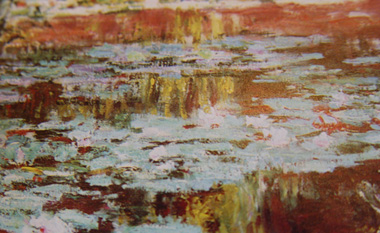
Section of Japanese Bridge at Giverny by Monet
They say the brain’s a pattern recognition organ, but today mine has been on something like speed. Talking to Elaine as we woke up this morning, I remembered a deeply moving dream I had last night. (Which in itself was slightly odd, given that I had been talking to someone at Shell yesterday who said he hadn’t dreamed, or remembered dreaming, for 15 years.)
In the same way that some forms of software cross-connect with everything on your computer once uploaded, this dream has been cross-connecting with just about everything that passes though my mind today, though on the face of it this was a pretty simple thing.
The dream?
I was in conversation with an unknown person beside an expanse of water covered, at least close to, by water lilies. When I looked down, the nearest lilies and water were painted, but exquisitely so you could hardly tell that they were not real. But then the further out one looked, the more the landscape seemed totally natural. Next, however, I noticed that the water between the lily leaves, which at first glance moved and reflected just like normal water, was in fact composed of a profusion of mini ripple systems, as though a constant fine rain was falling on the surface. And as I continued to observe, it became clear that these ripple systems were being generated mathematically, not just mathematically describable, as if the whole thing was being dreamed by a silicon brain or created by some incredibly powerful computer. And then the ripples decomposed into spirals, suggesting deeper worlds.
And that was it, except that then the cross-connections began as I talked to Elaine and Gaia (and her friend Becky, who is staying with us) over breakfast, and read today’s stack of newspapers.
First, there was the news of the extraordinary success of the Cassini spacecraft and of the Huygens probe it carried in landing on Titan, the giant moon of Saturn. The best illustrations were on the front page of The Independent, which I had tried to cancel last week but which Elaine had insisted on keeping. The visual mindstorm that was already taking over parts of my brain was now cross-threaded with the series of sweeping arcs, trajectories, fly-bys and orbitings that brought the cameras across two billion miles in seven years, from Cassini’s launch in October 1997 (when, incidentally, SustainAbility had agreed to work with Shell after two years of saying no) to yesterday’s landing.
No wonder that the NASA and ESA scientists are elated, believing that the images that have been streaming back give us some idea of what the primitive earth would have been like.
After breakfast, I tracked down the book on Monet I had bought Elaine some years ago, but never really read: Monet by Himself, edited by Richard Kendall. Samples of a couple of his paintings are dropped in above. But as I looked at the images, the droplets continued to play across that dream surface, reminding me of someone yesterday who had brought spirals into a conversation, but even more of something I read earlier in the week about the ‘fecund universe’ theory, if I remember right. The notion being that new galaxies are constantly forming and, something I think I also read, that even entire universes may also be continually forming, on the other side of black holes, and spooling out into who knows where.
The dream image that on first glance had seemed static, like a landscape caught in ‘Golden Pond’ amber, and when I think of it hugely reminiscent of a painting my grandmother Isabel Coaker had in her flats in Pont Street and Lennox Gardens in the 1970s, was in fact sizzling with unseen creation, a roiling wealth of new opportunities. Perhaps, these are the micro-worlds, potential new universes, that the social entrepreneurs that are the subject of the new book I’m just beginning to write are helping lead me into?
Whatever, beneath calm surfaces great energies are often quietly working. Victor Mallet writes in today’s Financial Times of how those at sea experienced the Indian ocean tsunamis. Many died, but some boats sailed across the seas all oblivious. “We had two boats sail through the tsunami,” Mallet quotes one charter company executive as saying. “There was death and destruction on either side of them and they barely noticed the wave. They felt it might have been a boat wake.”
Whatever has been driving it, the process of cross-linking continued apace as I continued reading through the papers. The Times, for example, which I sometimes describe as a comic now that it has gone tabloid, opened out into a seemingly endless series of supplements, each nested within another. So we started with things like ‘Money’ and ‘Weekend Review’, moving on through ‘Travel’ through to ‘The Eye’ and ‘Body & Soul’. It was very much like a series of nested universes, flaring or flowering before me.
Then there were the climate change stories, with The Guardian reporting that bears in Russia that are meant to hibernate until March are out and about already. Behind the day-to-day reality we have grown comfortable with, stupendous changes are now taking place, though currently it’s a bit like catching sight of them in peripheral vision, like those spirals between the lily leaves. The Times, alongside a photo of what it says is a Muscovite ice sculpture exhibition melting, says that Moscow is having its warmest January since records began.
And while on the subject of records, just as I was wondering whether I needed an even stronger cup of coffee, I came across obituaries in both The Times and The Independent on Spencer Dryden, drummer during their glory days with Jefferson Airplane (www.jeffersonairplane.com). They were one of my favourite bands during the late Sixties, indeed I remember racing out to get their first album, Surrealistic Pillow, when it first appeared, and their song White Rabbit features in my Top 16 tracks, listed elsewhere on this site.
Having always been a sucker for Ravel’s Bolero, I was seized by Adam Sweeting’s throwaway line in The Guardian‘s obituary that Dryden, originally a jazz drummer, had given the song a bolero beat. I mentioned that to Gaia, who promptly exactly reproduced that insistent, druggy beat, all spiralling out to Grace Slick’s rendering of the story of Lewis Carroll’s Alice and her adventures underground.
And that put me even further in mind of those distant, heady days of psychedelia and the underground politics of the Sixties. Instead of reading magazines like Wired or Fast Company, as I do today, I then subscribed to Rolling Stone and Ramparts, the New Left organ of folk like Students for a Democratic Society (SDS).
Weirdly, and these things do happen, my Mac, which has been playing a succession of blues tracks I bought last week after seeing several of the unbelievably good Blues series pulled together by Martin Scorsese for PBS (wwwthebluesonline.com), and particularly the Wim Wenders film on Blind Willie Johnson, Skip James and JB Lenoir, is just now playing Cassandra Wilson’s version of Lenoir’s Vietnam Blues. And what should I be reading this week but Ho Chin Minh: A Life, by William J. Duiker, though whether I manage to make it to the end of this particular Ho Chi Minh trail, reading every word of the 700-page tome, remains to be seen.
Oh, and with Lou Reed’s laconic, rippling, thumping version of Skip James Look Down the Road now playing, it strikes me that this day isn’t yet even half way through.
Friday, January 14, 2005
GERALD LEACH: GENTLE GIANT
It’s an interesting reflection of how long the environmental and sustainable development movements have been a-building that these days I quite often turn to the obituary pages to find news of a colleague or acquaintance in the field who has just died. This time, in The Times, it’s Gerald Leach, whose writing I read avidly when he was at The Observer, where he helped break the Limits to Growth story, and who I later was to meet a number of times, mainly at parties at the International Institute for Environment and Development (IIED), which he later joined.
I’m six foot, but my memory of him is as a gentle giant, stooping to maintain contact with lesser (or do I mean shorter?) mortals. His work on low energy strategies was hugely influential in shaping my thinking on work I did as part of the UK Conservation and Development Strategy, published in 1983, and in the early days of Environmental Data Services (ENDS), where I was editor from 1978 and then managing director until 1983.
A godfather, really, of sustainable development.
Tuesday, January 11, 2005
BITC AS ‘FIG LEAF’
One of the things we have long encouraged companies to do is to pressure industry associations they are part of to pursue policies aligned with the corporate responsibility and sustainable development priorities the relevant companies have adopted. In the same spirit, we have also encouraged industry associations to drop member companies that do not meet their own (often dilute) CR and SD requirements. In this context it’s very interesting to see today’s Financial Times, whose front page reports that Suffolk brewers Adnams – which won the first “small company of the year award” from Business in the Community in 2003 – has resigned from BITC.
The company’s explanation? Its chairman, Simon Loftus, told the FT that BITC was being used as a “PR figleaf” by some member companies – and that it is too soft on irresponsible members. Whatever the facts of the matter, and I have worked with BITC and its affliated Business in the Environment over many years, I hope (but don’t expect) that more companies will follow Adnams’ lead with bodies like the Confederation of British Industry (CBI) and the International Chamber of Commerce).
Friday, January 07, 2005
(S)CARE IN THE COMMUNITY
Got a better idea of what care in the community can mean today. As I was coming back from the Soho Curzon, where Elaine, Gaia and I had seen the fabulous ‘House of Flying Daggers’, I turned into our road, on my own, to see a well-built young man attacking cars as he came towards me. “Who killed John Lennon?” he demanded, before shouting “I did” and launching into me, telling me about Hitler as he did so. Somewhat hampered by a large bag I was carrying, I managed to extricate myself, then followed him while dialling 999.
It turns out they put you in a holding queue while they try to get through to Scotland Yard, no less. Meanwhile our friend smashes various cars, attacks another – elderly – man beating him to the ground and dislocating his shoulder, and so forth. Determined not to let him get away I follow him, through snickets, around corners, calling 999 three times to let the police know where he is headed – and eventually stopping two police cars when they finally arrived to say he’d taken off in a completely different direction. In the end, feeling I had done enough and was tempting fate, I headed home, meeting Elaine coming to look for me on the way, only to find another police car near the scene of the attacks, which I also stopped. Then a bunch of neighbours came out to complain that their cars had been damaged.
Spent this evening in Roehampton and then Kingston Hospitals, with a wind so violent as Gaia and I made our way through the endless, bleak maze of Kingston Hospital that it ripped my glasses from my face and sending them spinning through a wire fence. Luckily, Gaia had a torch, so eventually we found them in the dark. Only a bit of rib damage, whereas with the other man you could see the dislocation – and yet, even so, it took the hospitals ages to get to treating him. This evening two policemen come around to tell us what happened: they caught the man. Well, I knew that, having heard them reporting in over one of their female colleagues’ wireless. “He’s got some mental issues,” they said through the static. Whatever, thank heavens for cell phones – and thank heavens, too, for the poor people who struggle to keep our ailing health care system wobbling along on its gangrenous legs.
Monday, January 03, 2005
LONDON WETLAND CENTRE
Much of the day spent working through notebooks from the interviews I did with social entrepreneurs – many of them with Pamela Hartigan of the Schwab Foundation – at last year’s World Economic Forum meeting in Davos. Am feeding it all into the structure of the new book Pamela and I are writing, which is hugely energising.
Then, this afternoon, Elaine and I walk across to the London Wetland Centre, run by the Wildfowl & Wetlands Trust (www.wwt.org.uk). This is a 105-acre wetland landscape in the heart of Barnes, with 30 different habitats, 170 wild bird species recorded, plus more than 300 butterflies and moths – and 20 dragon and damselflies. When we arrived in Barnes, 30 years ago, this area was covered by four huge water reservoirs. It’s been a while since we last walked across, but – drab weather or not – it’s a staggeringly beautiful memorial to Sir Peter Scott who conceived both the Trust and the Centre. His statue, saluted (I like to think) by a swan, welcomes visitors to the Centre.
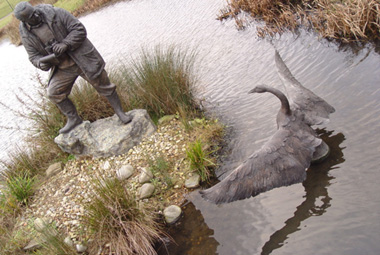
Sir Peter Scott saluted by swan (©JE)

Keeping a weather eye on proceedings (©JE)
Sunday, January 02, 2005
THE TIDE IS OUT
Elaine and I took a delightful walk around Barnes during most people’s lunchtime, across the Common to the old cemetery where old Bruce Ismay of White Star Line and Titanic infamy is buried (many years ago, in Pembrokeshire, we knew one of the Ismays who, when she wasn’t looking after her horses was grinding lenses for her telescope), then around to the Thames – where the tide was spectacularly out. Interesting to read in the papers how few people knew that a rapidly retreating tide is a tsunami precursor.
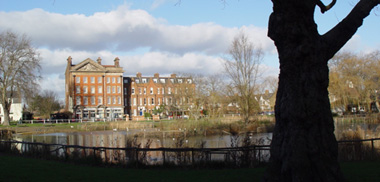
Barnes Pond (©JE)

Elaine 1 (©JE)
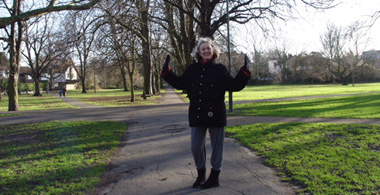
Elaine 2 (©JE)

Barnes Cemetery 1 (©JE)
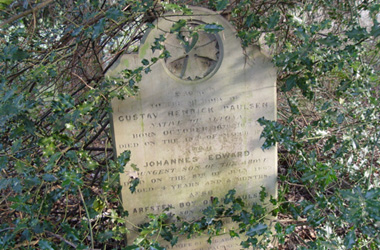
Barnes Cemetery 2 (©JE)
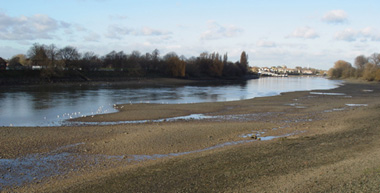
The Thames towards Hammersmith (©JE)
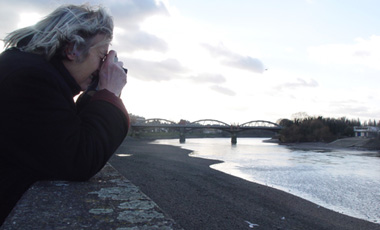
Elaine shoots the Thames (©JE)

Barnes Bridge (©JE)

